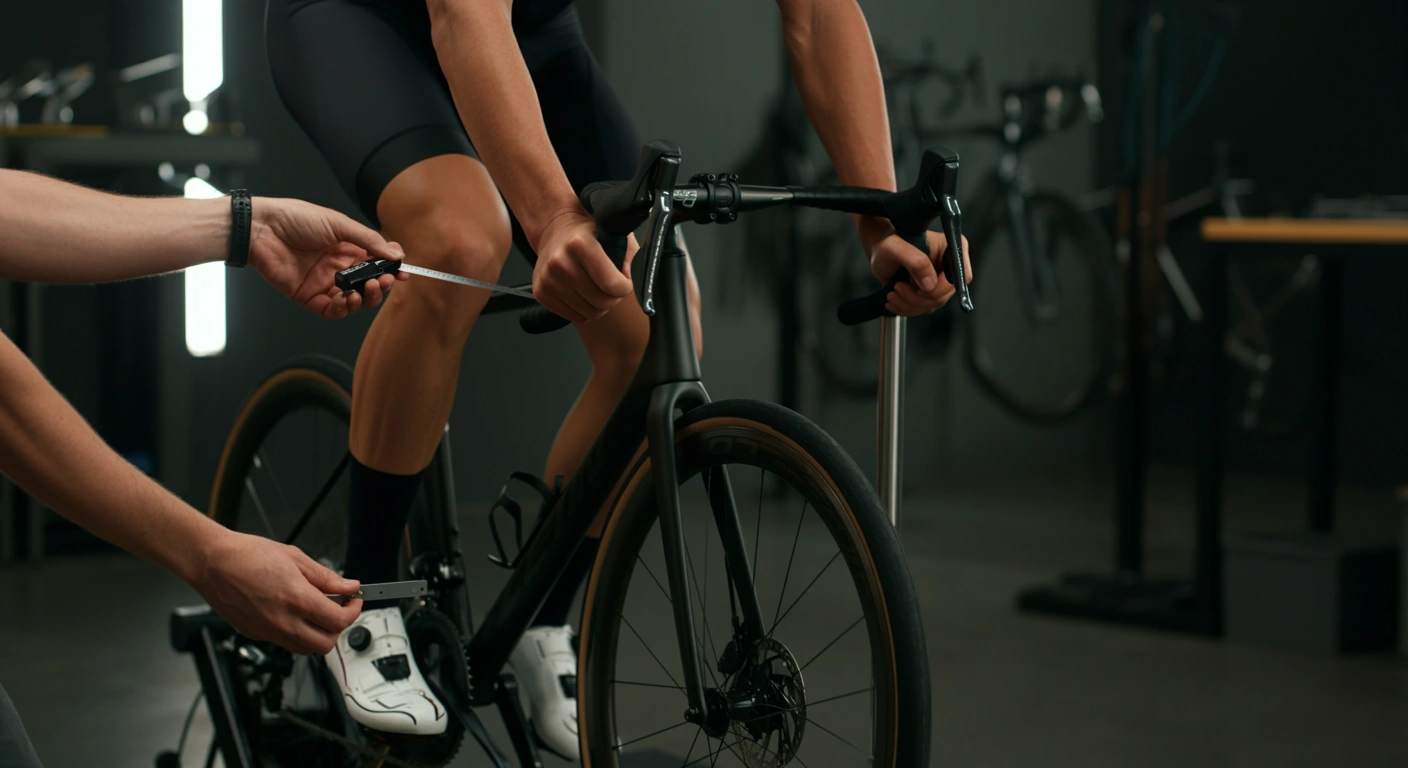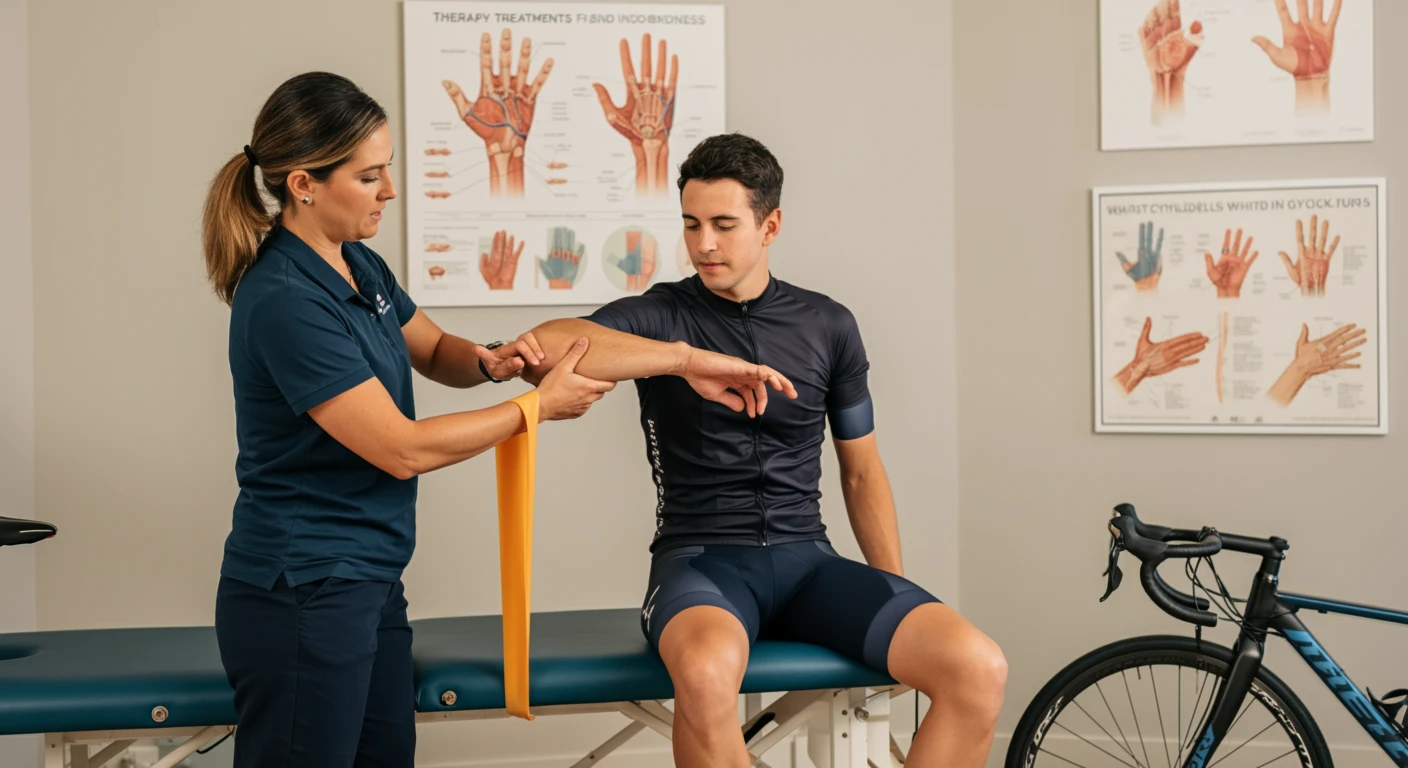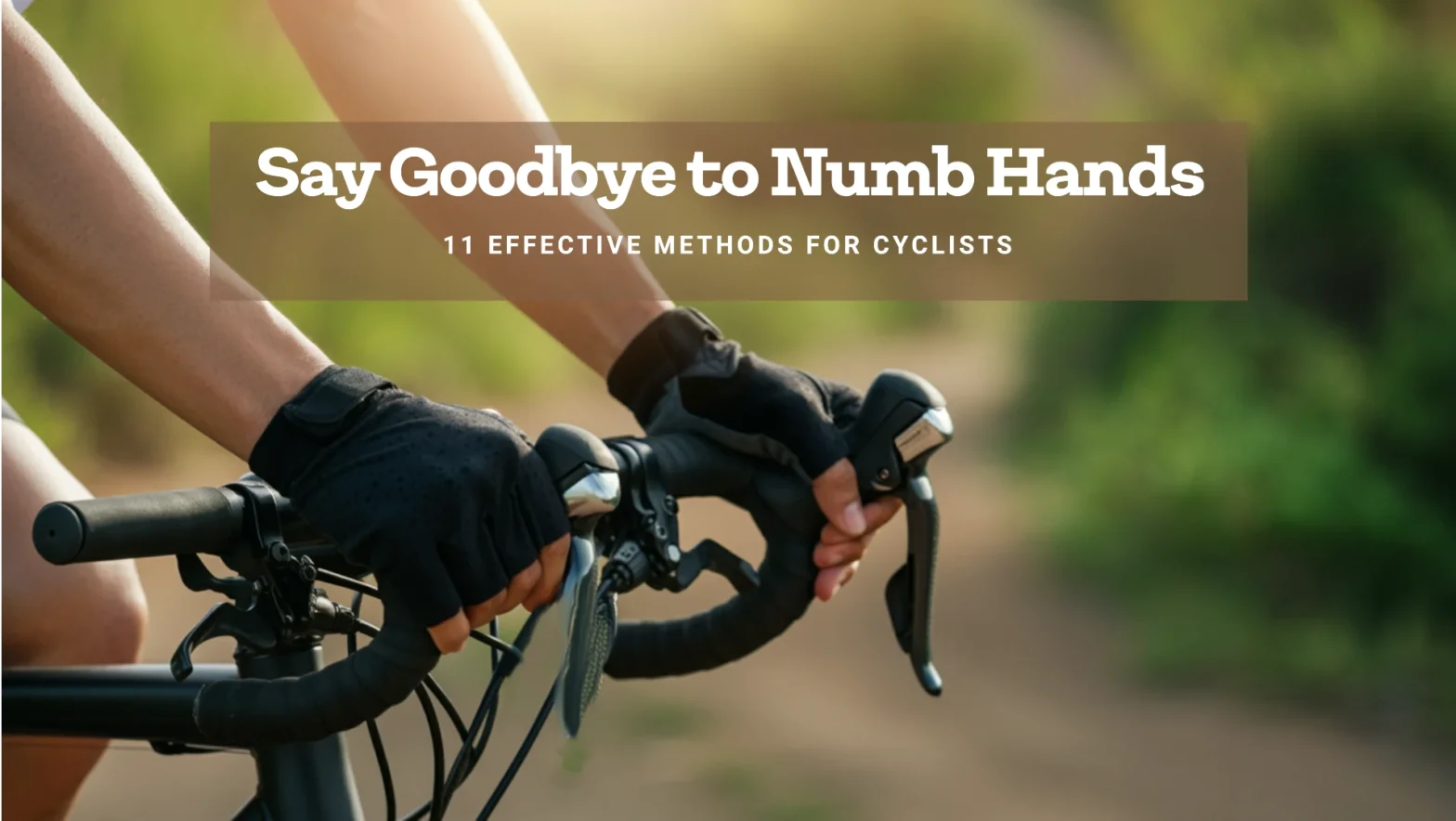Numbness of the hand is typically caused by pressure placed on the radial, median, or ulnar nerves. Default positions on the cycle can inevitably lead to compression, even if you’re not consciously doing so.
Cycling in a neutral wrist position (handshake) reduces contact pressure on this area and should prevent numbness or tingling in the hands. To achieve optimal hand positioning, you may also need to adjust the cycle’s hood position, bar width, etc.
We will dive into various self-help solutions, exercises, and professional treatments to help you stop numb hands when cycling.
How to Stop Numb Hands When Cycling: 9 Grip Fixes

There are several ways to prevent numbness when cycling. We will discuss some of the most effective methods for treating numb hands while cycling.
Get a Cycle Fitting
One of the most important things you can do to prevent numbness is to get a cycle fitting. A professional can help you adjust your cycle to fit your body perfectly during a cycle fitting. This can help reduce pressure on your hands and prevent hand numbness. Here are some things to expect during a cycle fitting:
- The professional will take measurements of your body to ensure that your cycle fits you perfectly.
- They will adjust the saddle height, handlebar height, and position of the brake levers and shifters to fit your body.
- They may suggest additional accessories, such as new handlebars or a different saddle, to improve your comfort.
Wear Gloves
Wearing gloves while cycling can also help prevent numb hands. Gloves provide extra padding to reduce pressure on your hands. Here are some features to look for when choosing cycling gloves:
- Padding: Look for gloves with gel padding, as they provide extra cushioning for your hands.
- Breathability: Invest in gloves with breathable material to avoid sweaty hands.
- Fit: Make sure your gloves fit snugly but not too tight.
Get a Grip
The type of handlebar grips you use can also affect hand numbness. Different grips are available, so finding the one that works best for you is essential. Some of the most common types of handlebar grips include:
- Ergonomic grips: These are designed to reduce hand pressure by evenly distributing your weight.
- Lock-on grips: With an inner lock ring, these grips stay firmly in place and offer additional support.
- Foam grips: Foam grips are lightweight and provide good grip but can wear out quickly.
Get a Cycle Tune-Up
Regular cycle maintenance is essential for preventing hand numbness. Here are some areas to focus on during a cycle tune-up:
- Brakes: Make sure they work correctly to avoid sudden stops or accidents that could pressure your hands.
- Wheels: Ensure that your wheels are aligned and the spokes are tightened to prevent vibrations that can cause numbness.
- Handlebars: Check that your handlebars are correctly tightened and adjusted to alleviate hand pressure.
Use Your Core
Maintaining proper posture while cycling requires core strength. When your core is weak, you may put additional pressure on your hands and wrists without realizing it. Here are some exercises to improve your core strength:
- Planks: Start with a basic forearm plank and hold it for 30 seconds to a minute.
- Bicycle crunches: Lie on your back while alternately bringing your knees toward your chest while twisting your torso.
- Leg lifts: Turn your body over and raise your legs to a 90-degree angle. Hold for a few seconds, then lower back down.
Adjust Your Hands
Proper hand positioning is crucial for reducing pressure on your hands. Here are some tips for adjusting your hands during rides:
- Switch between positions: Try moving your hands around on the handlebars every few minutes to reduce pressure on any one area.
- Keep your wrists straight: Try to keep your wrists straight and relaxed while riding.
- Avoid leaning on your hands: Don’t put your weight entirely on your hands, as this can cause numbness.
Relax Your Elbows
Tension in your elbows can also contribute to hand numbness. Here are some techniques to relax your elbows while cycling:
- Shake it out: Try occasionally shaking your hands and arms to loosen up any tension.
- Keep a slight bend in your elbows: Maintain a slight angle to absorb shock and reduce tension.
Incorporate Exercises

Besides core exercises, you can do other stretches and exercises to prevent hand numbness. Here are some examples:
- Finger stretches: Stretch your fingers by grabbing one finger at a time and gently pulling it back.
- Shoulder rolls: Move your shoulders backward and forward to release tension.
- Wrist stretches: Gently stretch your wrists by bending them up and down and side to side.
- Fist clenches: Make a fist and squeeze, hold for 10 seconds, and release.
Vary Your Hand Position
Switching up your hand position regularly is crucial to prevent numbness or tingling in your hands. Your hands absorb all the shock from the road, and if you maintain the same position for extended periods, the pressure on your nerves can cause numbness. Here are some different hand positions to try during your rides:
- On the hoods: This is the most common position, and keeping your wrists aligned with your forearms is crucial.
- In the drops: This position is suitable for descending and provides better aerodynamics.
- On the tops: This position applies less weight to your hands and can give you a good break.
Adjust Your Seat Position
Your body’s positioning on the cycle is also crucial in avoiding numbness. Sitting too far forward can put more pressure on your hands, causing numbness. Here’s how to adjust your seat to help prevent numbness:
- Tilt your seat up slightly.
- Position your saddle’s height correctly.
- Saddles can be moved forward or backward depending on the shape of your body.
Invest in A Pair of Cycling Gloves
Cycling gloves can help you prevent numbness by reducing the vibrations. The padding in the gloves is placed in areas that absorb shock to protect your hands. When choosing cycling gloves, consider factors like:
- The type of padding: gel or foam.
- The material: leather or fabric.
- The size: make sure they fit well.
Cycling with Numb Hands: Therapy Treatments

Suppose you are experiencing numbness in your hands when cycling. It is essential to seek professional treatment options. Occupational and physical therapy treatments can relieve and improve your overall writing and arm function. Here are some therapy treatments that you may want to consider:
Occupational Therapy Treatments
- Hand Therapy: A form of occupational therapy that targets the hands and fingers. Your hand therapist will teach you exercises to improve strength, flexibility, and range of motion. They may also use heat or ice, massage, and electrical stimulation techniques.
- Ergonomics: Occupational therapists can help you adjust your bike and cycling technique to reduce hand pressure, fatigue, and numbness. They may suggest modifications like widening the handlebars or changing the angle of the brake levers.
- Splinting: Splints are custom-made devices that hold your hand and wrist in a specific position to reduce pain and improve posture. Occupational therapists can evaluate your needs and create a splint that can be worn during cycling or as part of a rehabilitation program.
Physical Therapy Treatments
- Strengthening Exercises: Physical therapy can increase your arm and hand strength and endurance. These exercises may include wrist curls, grip, and shoulder strengthening exercises.
- Stretching: A physical therapist can teach you exercises to increase your flexibility and range of motion. These may include wrist and forearm stretches, and shoulder and neck extends.
- Massage and Manual Therapy: Physical therapists may use massage, mobilization, and manipulation techniques to loosen tight muscles, reduce pain, and improve circulation in your hands and arms.
Conclusion
Preventing numbness when cycling is vital to staying safe and comfortable on your rides. From a cycle fitting to investing in high-quality gloves, there are many steps you can take to alleviate numbness and keep your hands feeling great.
Incorporating exercises and stretches into your routine and considering professional treatments when necessary, you can enjoy the thrill of cycling without the discomfort and risk of numbness.
Remember always to be aware of your body and listen to it when it sends signals of discomfort. With the proper measures, you can keep your hands happy and healthy while cycling for miles.


